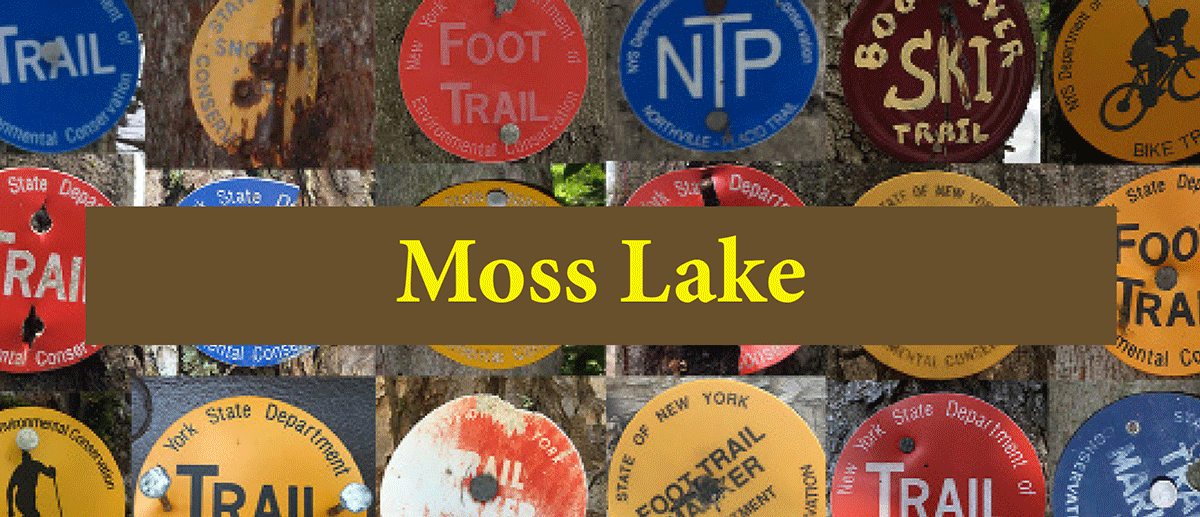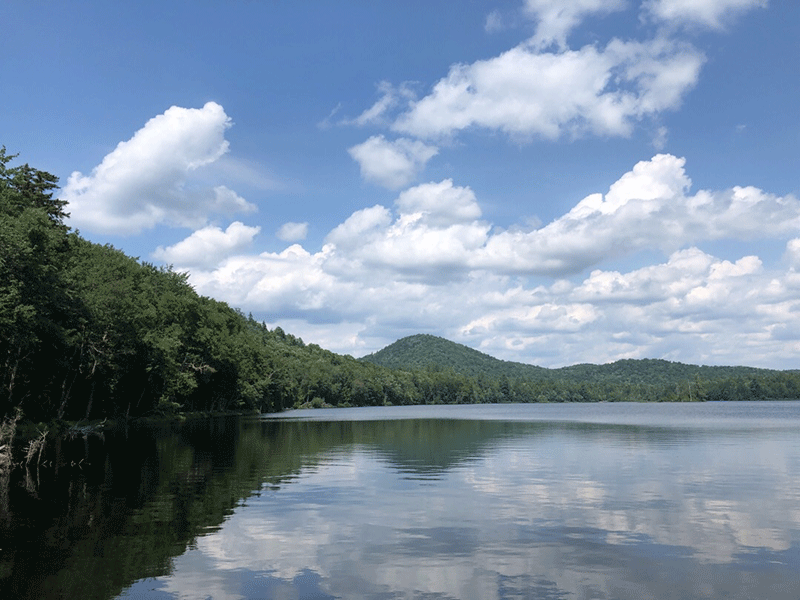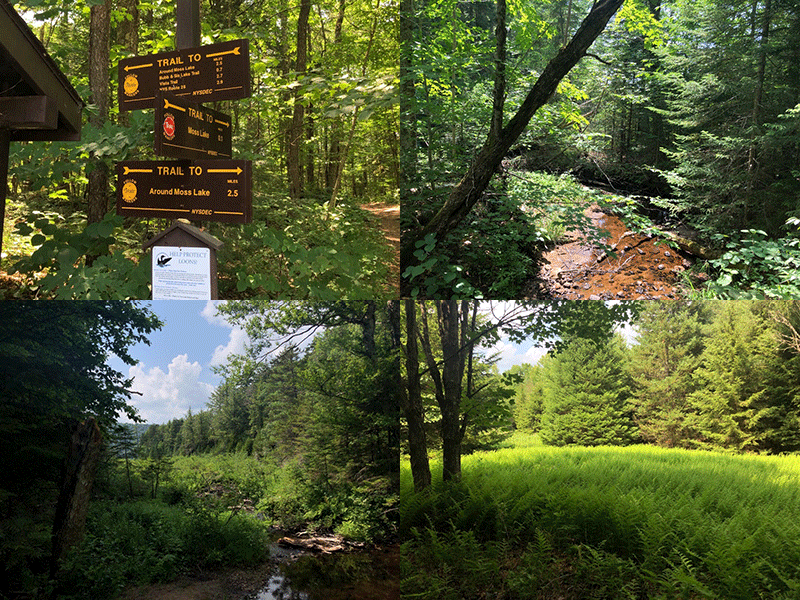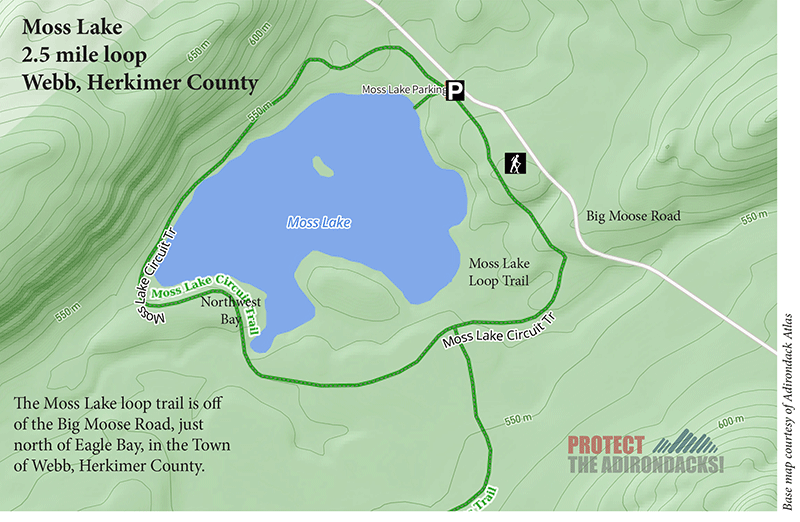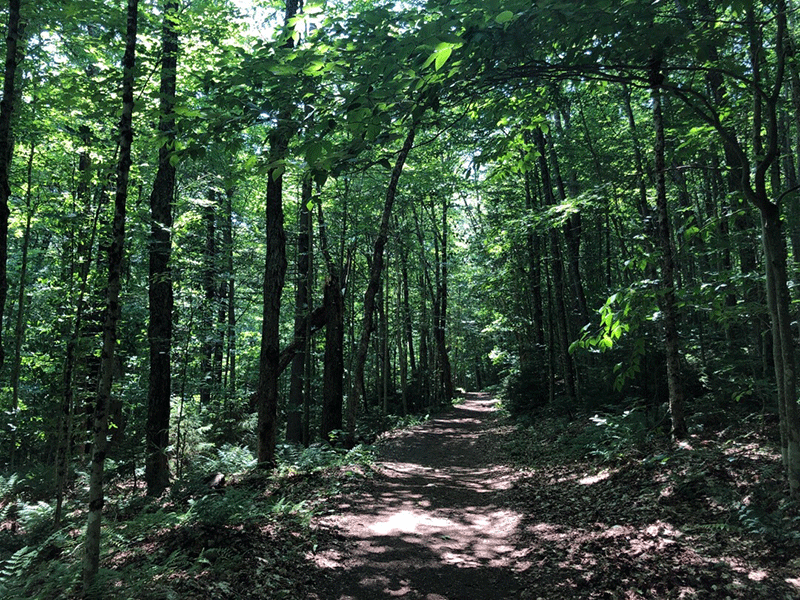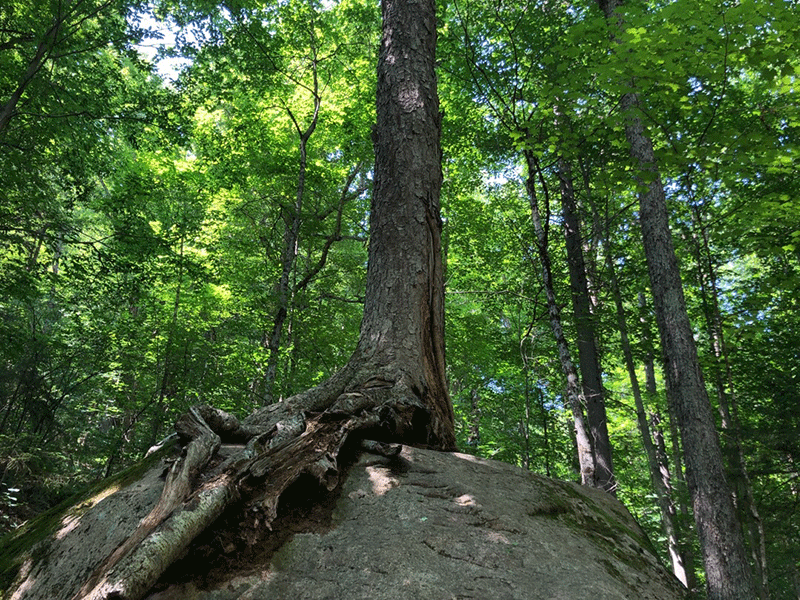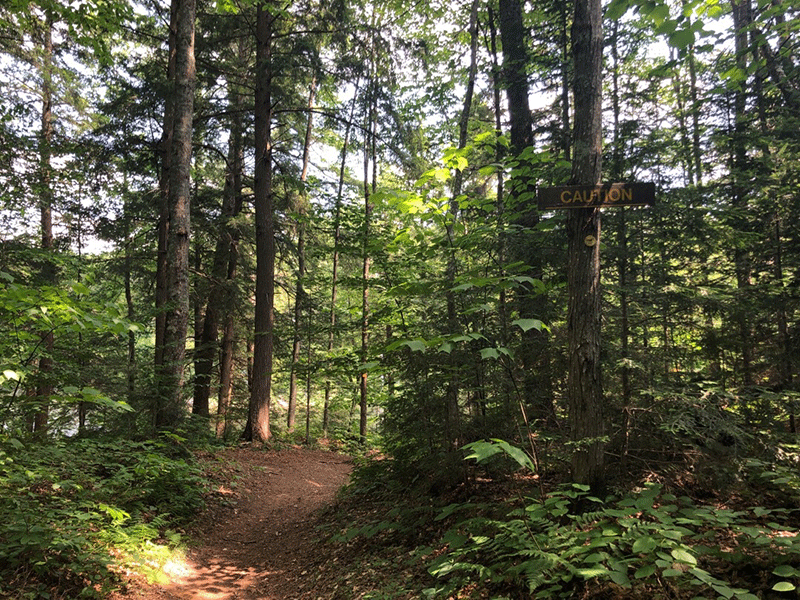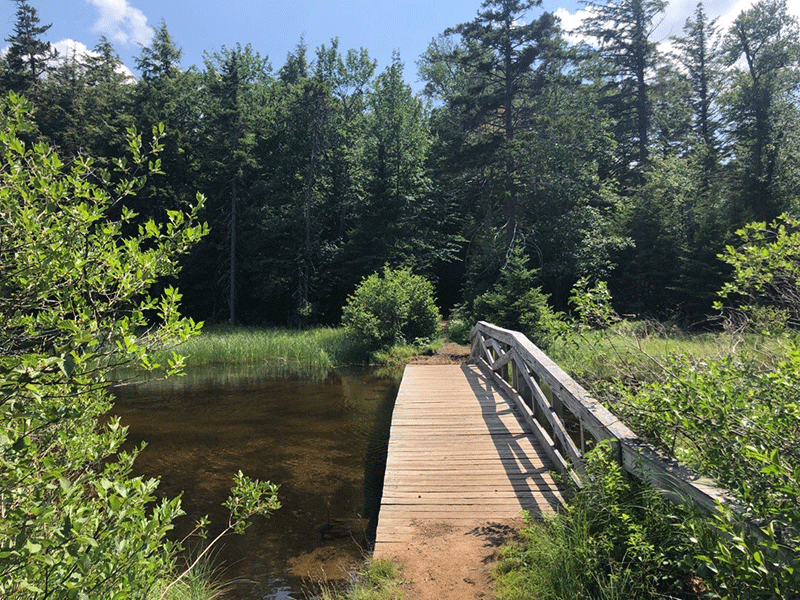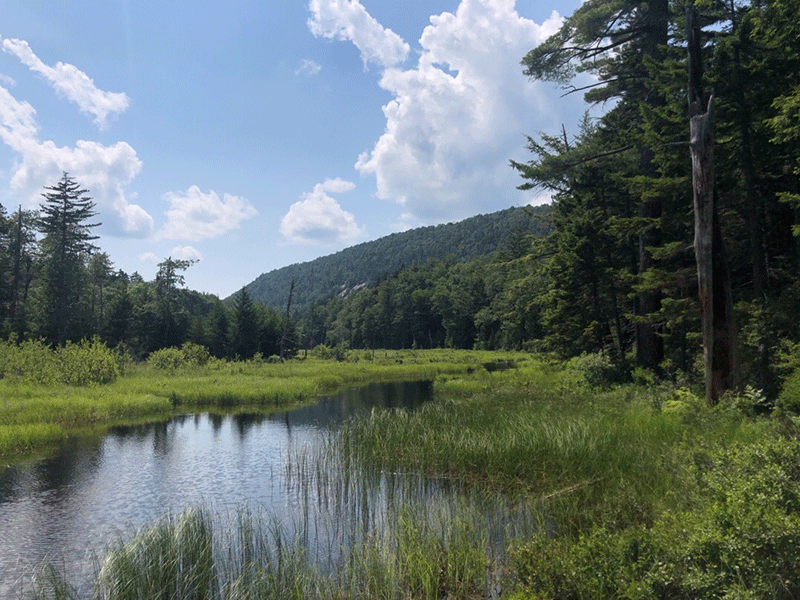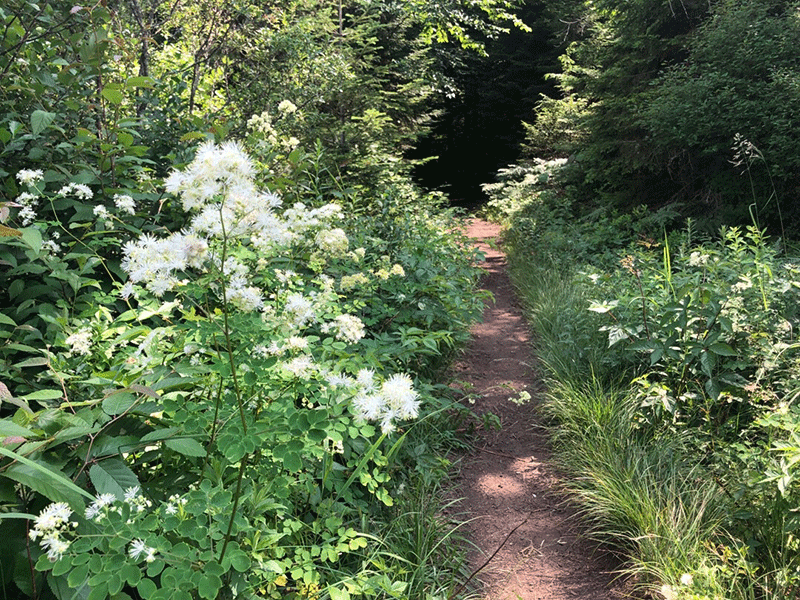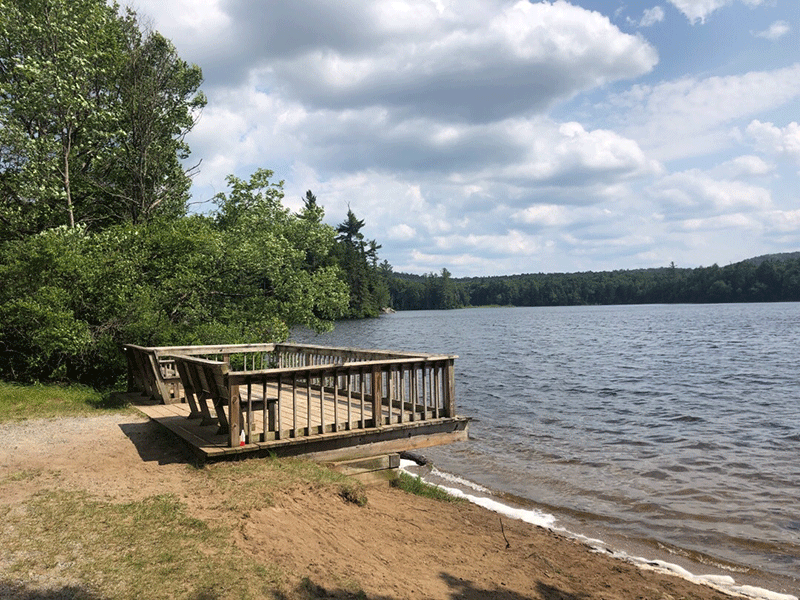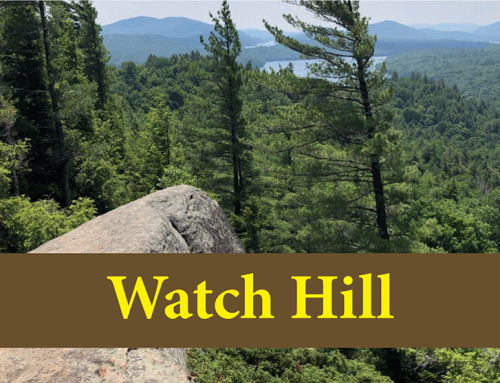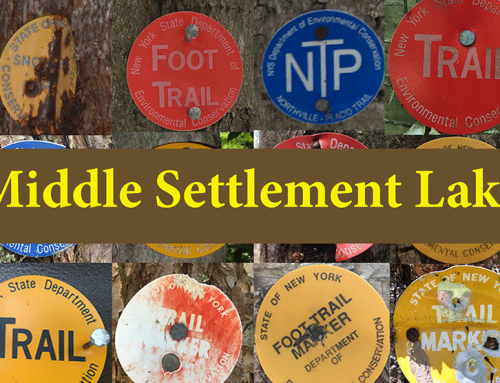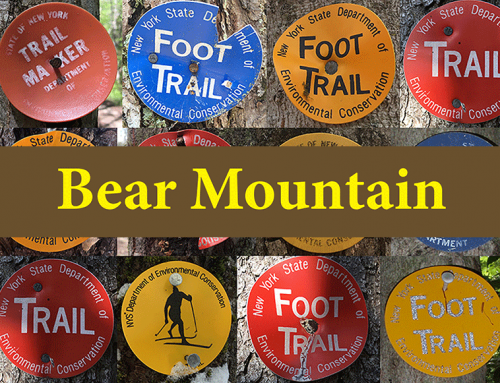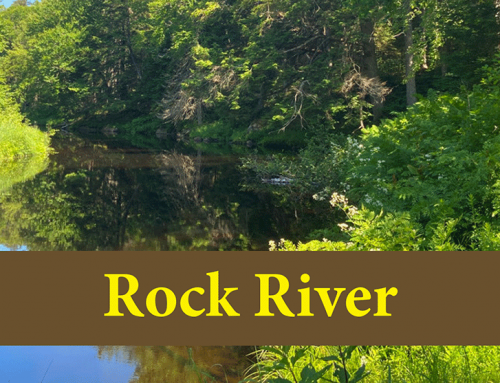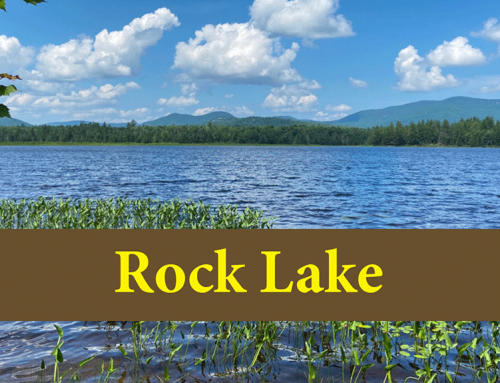The Moss Lake Trail offers an easy 2.5-mile loop hike through beautiful forests around a scenic lake
Moss Lake
2.5 Miles Loop
Fulton Chain Wild Forest
Webb, Herkimer County
Hiking, Snowshoeing, Cross-Country Skiing
Level of Difficulty: Easy
Hike Moss Lake
The Moss Lake Trail is a primarily flat 2.5-mile path that loops around the edge of the beautiful Moss Lake, outside of Old Forge in the Town of Webb in Herkimer County. Moss Lake is in part of the public Forest Preserve in the Fulton Chain Wild Forest Area. The Moss Lake Trail offers an easy hike through beautiful forests. The site is also a historic cultural area.
The parking area and trailhead for this hike is located off of Big Moose Road, which is a north turn off of Route 28 between Old Forge and Eagle Bay. From the parking lot, follow the red trail markers. There is a beach and canoe launch site 0.1 miles on the trail that offers a wide view of the Moss Lake and is a pleasant spot to relax before or after the hike. The loop trail can be started from either direction and follows yellow trail markers.
Hiking counterclockwise, the trail immediately drops down to cross over a small stream. Soon the trail transitions into a gravel path and begins to curl away from Big Moose Road to the left. A side trail leads to a picnic table in a grassy field and a wooden dock overlooking the lake. Returning to the main trail, the trail rises up and to the right around another campsite after 0.25 miles. The trail then runs fairly straight for about 0.5 miles before passing a sugar maple growing out of a massive boulder on the right among a sea of boulders. The trail continues to wind to the left around the lake as it passes over a short bridge and a tall white pine forest.
Soon the trail descends onto a longer bridge spanning a wetland creek that leads into a bay in Moss Lake on the left. Off to the right, a small mountain ridge and its rocky slides rise up behind the scenic wetland area. In about 0.5 miles, the trail crosses the intersection with the trail to Bubbs and Sis Lakes. Soon after, the path leads onto another bridge-crossing, this time over a thin, slow-moving forest stream. The trail proceeds through the mixed forest for 0.4 miles until it emerges into an open sunny clearing. The path over this short stretch is very sandy and passes a vast green field of ferns and milkweed. From here, the parking lot and trailhead is another few hundred yards through the woods.
Click here for a map and directions to Moss Lake.
=======
The 1974 Moss Lake Take-Over
Moss Lake is an important historic cultural site. In 1974, the land that the trail now runs over was reclaimed by a group of people from the Kanien’kehá:ka (Mohawk) Nation. Seeking to practice their traditional forms of governance, society, and culture on their historic lands, they established the community of Ganienkeh, or “Land of the Flint.” At that time there were old, unoccupied buildings on the site. After three years, the group reached a settlement with New York State officials to relocate from the Forest Preserve to a 600-acre territory just south of the Canadian border. Here, members of the Nation continue to operate a uniquely sovereign Indigenous territory in accordance with their historic principles.
While conservation of the Adirondack Park and other outdoor spaces provides essential protection for natural resources and public recreational experiences and opportunities, this often occurs through the expropriation of the traditional hunting, migration, and homelands of Indigenous peoples. The history of Moss Lake serves as a reminder of this reality, but it is not unique. The claim to this land by the Mohawk Nation is a reflection of the ongoing struggle for land and rights of Indigenous peoples, encouraging visitors and organizations alike to think about the past and future of stewardship of land in this region.
=======
When You Hike Make Sure to Practice “Leave No Trace” to be Prepared and to Protect the Forest Preserve
Please follow “carry in, carry out” rules for all trash and follow other Leave No Trace principles when hiking in the public Forest Preserve and other wild areas. The seven Leave No Trace principles are: 1) Plan ahead and prepare; 2) Stay on hiking trails and camp at designated areas; 3) Dispose of human waste and trash properly; 4) Leave what you find; 5) Minimize campfires; 6) Respect wildlife; 7) Respect other hikers.
Educated hikers do not damage the environment. Prepared hikers do not need search and rescue unless injured.
Winter Use: Moss Lake is a popular trail for snowshoeing and cross-country skiing in the winter.
Click here to become a member of Protect the Adirondacks.

